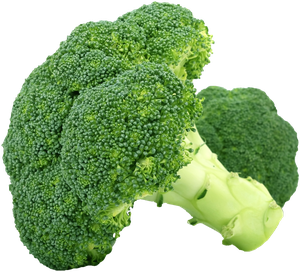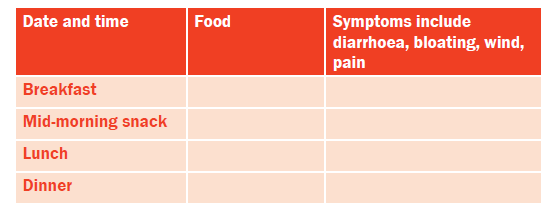Food diaries and food reintroduction plans
As discussed, some people with IBD may find that certain foods or excess alcohol can make their symptoms worse.
One good way of working out if particular foods are causing problems is to start keeping a ‘food diary’. Make a note of everything you eat for each meal, and then record any symptoms you may have afterwards, such as diarrhea or bloating and wind.
You could use a table like the one below:

Once you have identified your ‘triggers’, you can then think about how to avoid your ‘problem foods’ - but do remember how important it is to keep your diet well balanced.
A food diary is also very useful if you have been recommended an exclusion and reintroduction plan or diet such as those described below.
There are several different ways of eliminating and then reintroducing foods into your diet. Two of the most common ones include:
- Elimination (or exclusion) diets. This is the most time-consuming food exclusion and reintroduction diet. Some people (particularly those with active Crohn’s) may be advised to go on a liquid only diet (enteral nutrition) for a while before they start reintroducing foods. Foods are then reintroduced into the diet one by one every few days in a specific order, to see whether any particular foods cause a reaction.
- The LOFFLEX (LOw Fibre, Fat Limited, EXclusion) diet. This is specifically tailored for people with Crohn’s Disease. It is less restrictive than an elimination diet, only excluding foods high in fat and fibre.
It is important to talk to your doctor or dietitian before you try any of these diets, because it is very easy to miss out on important nutrients.









